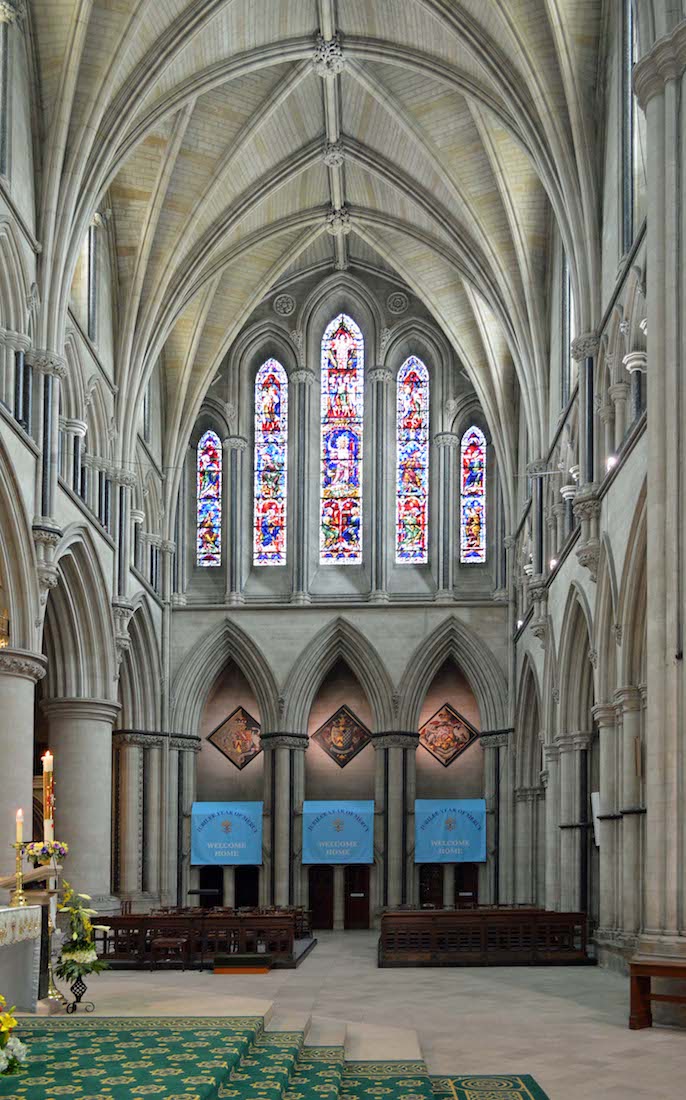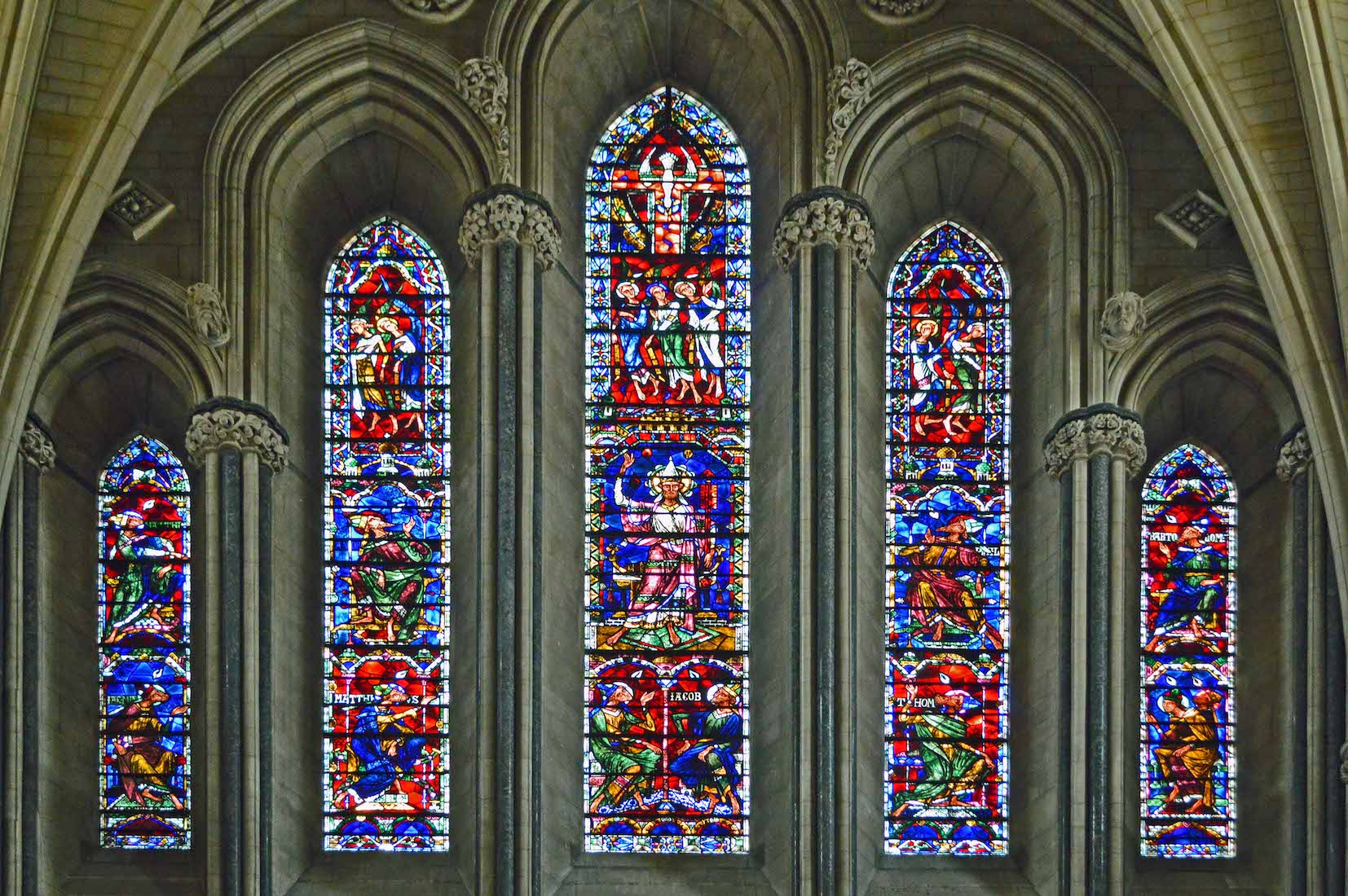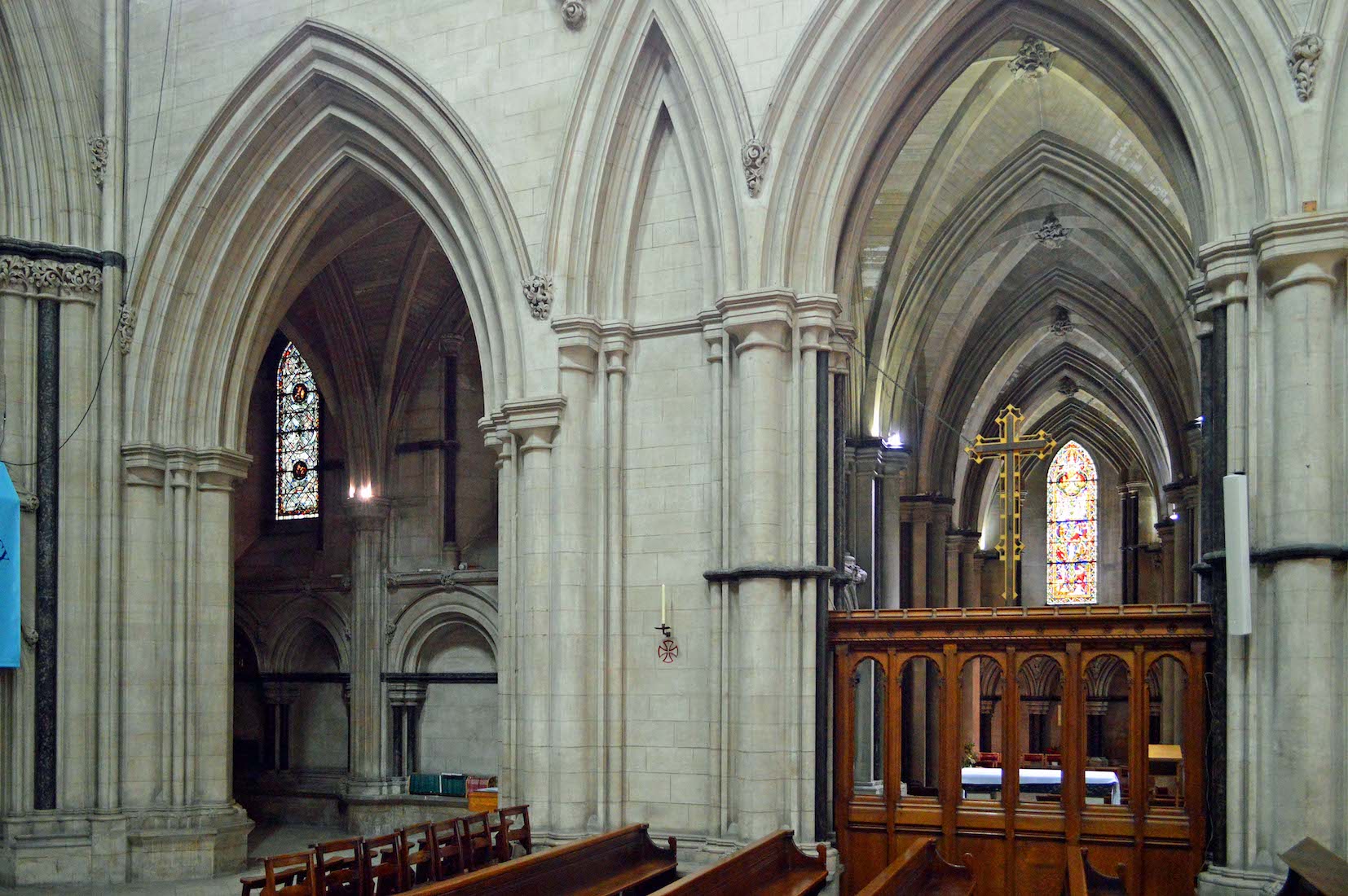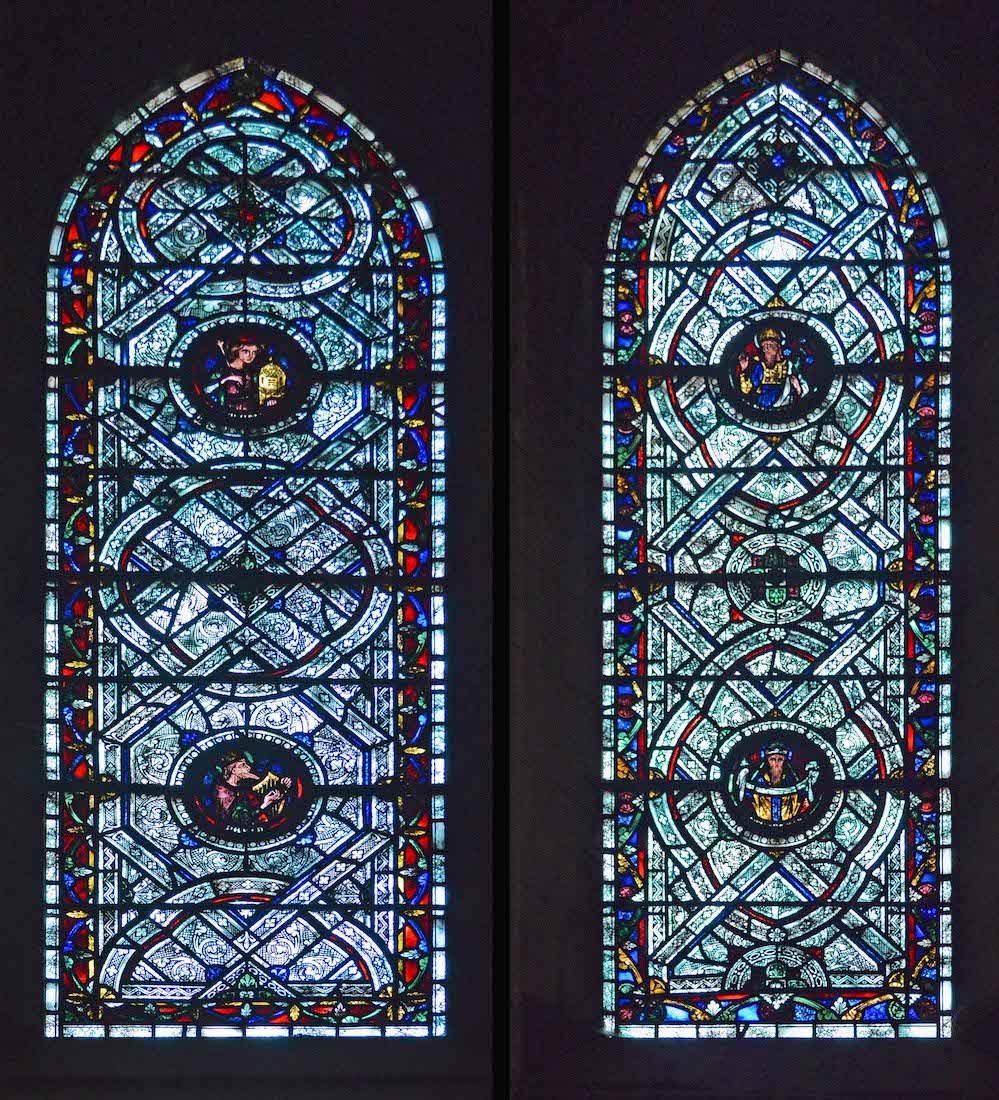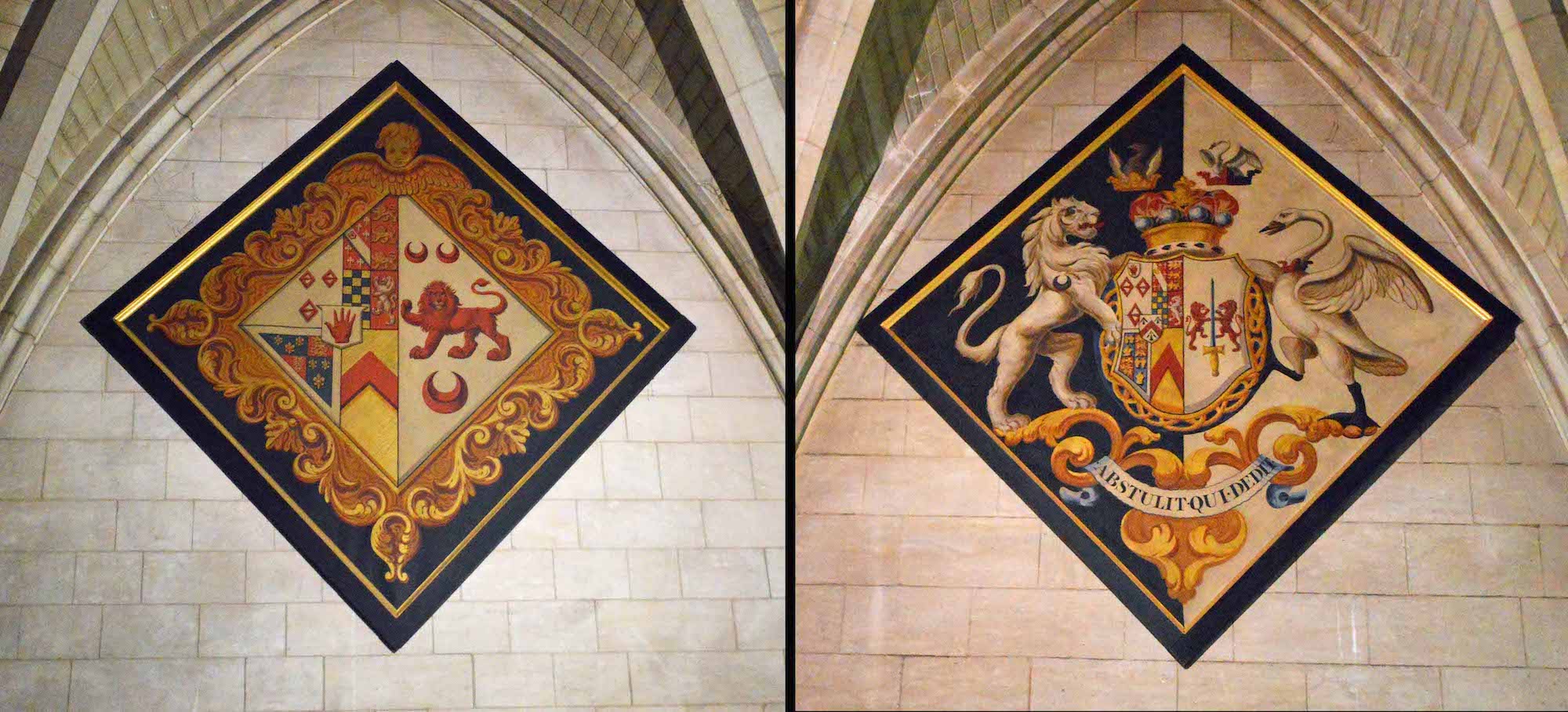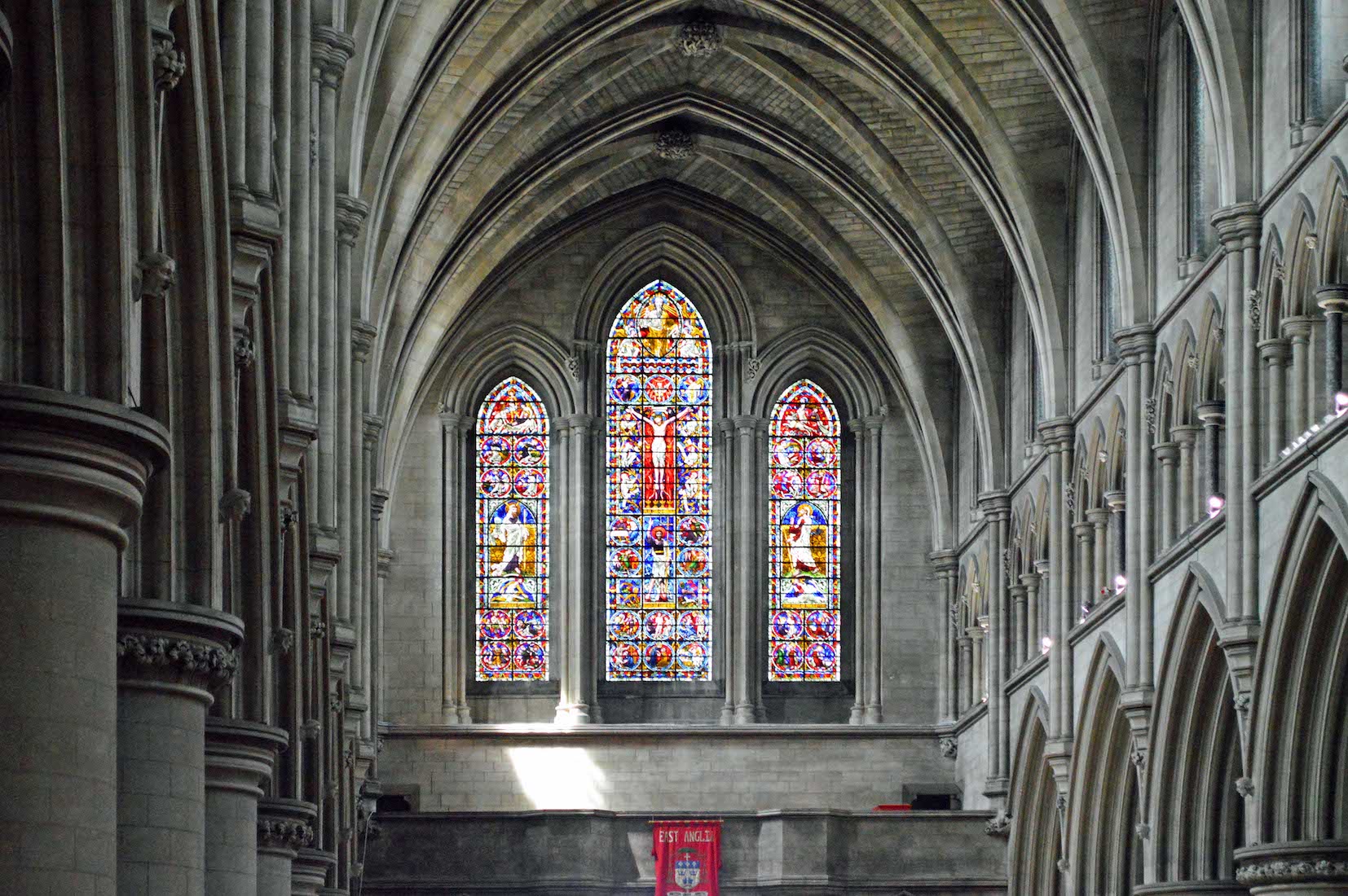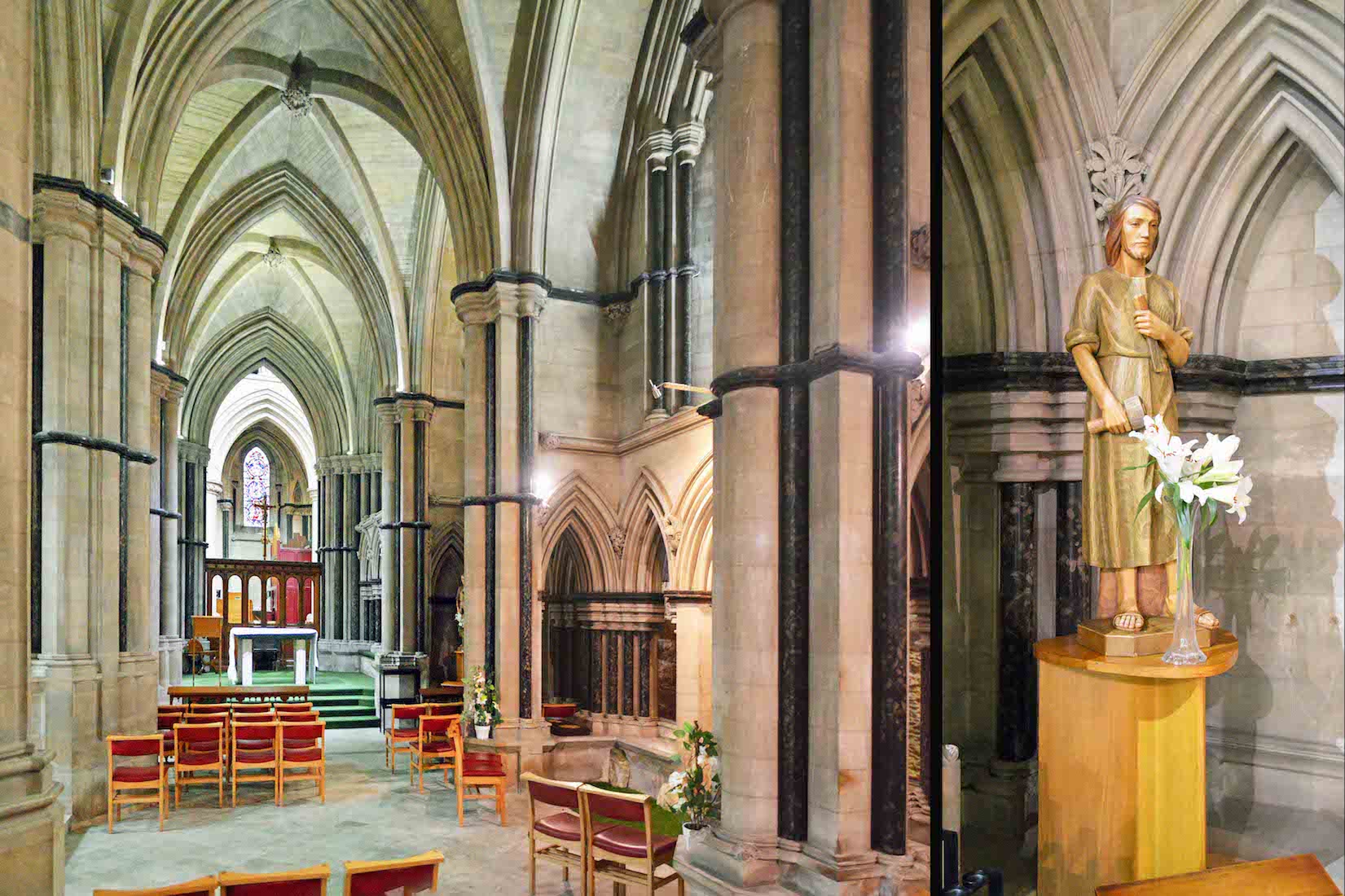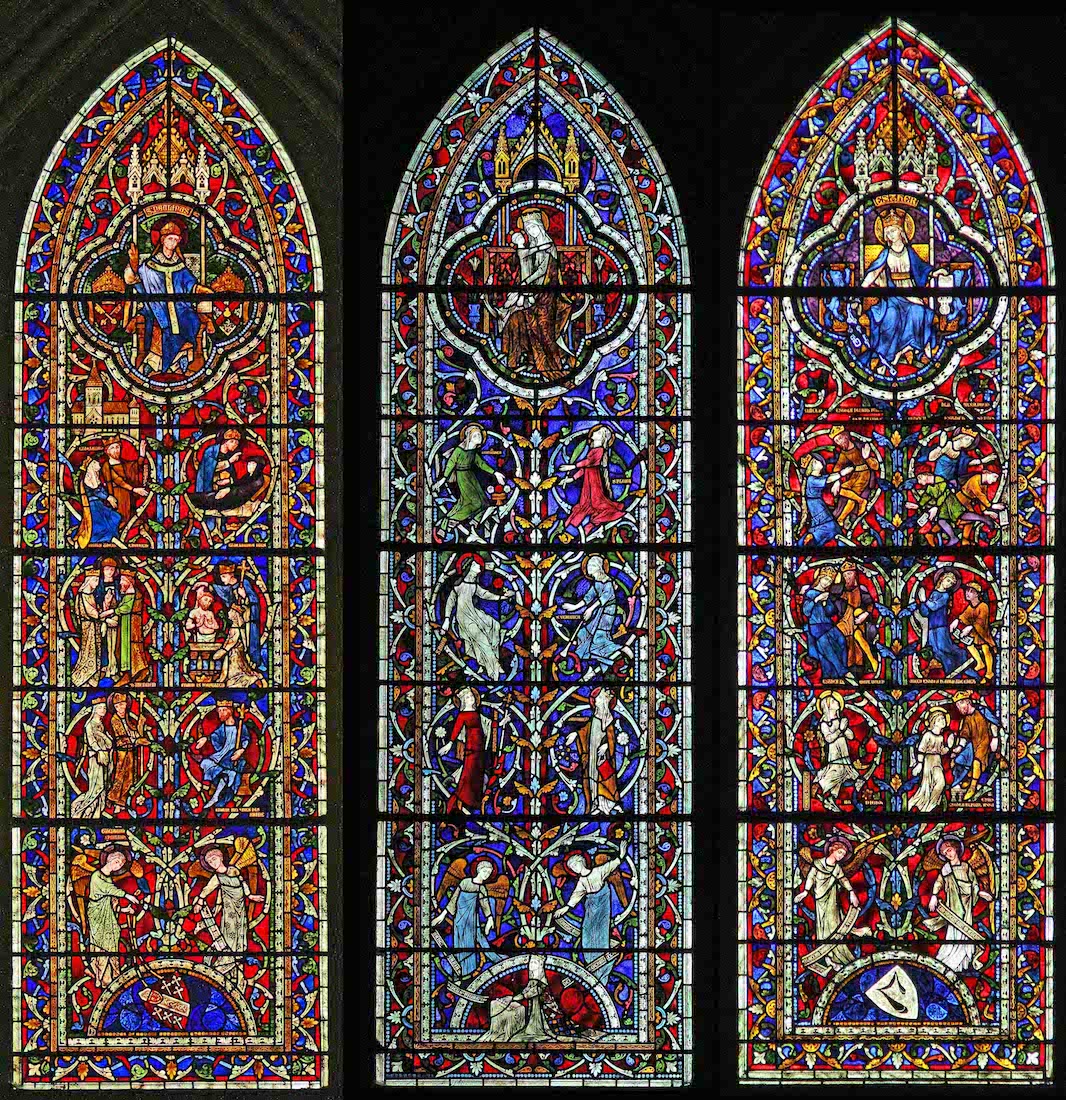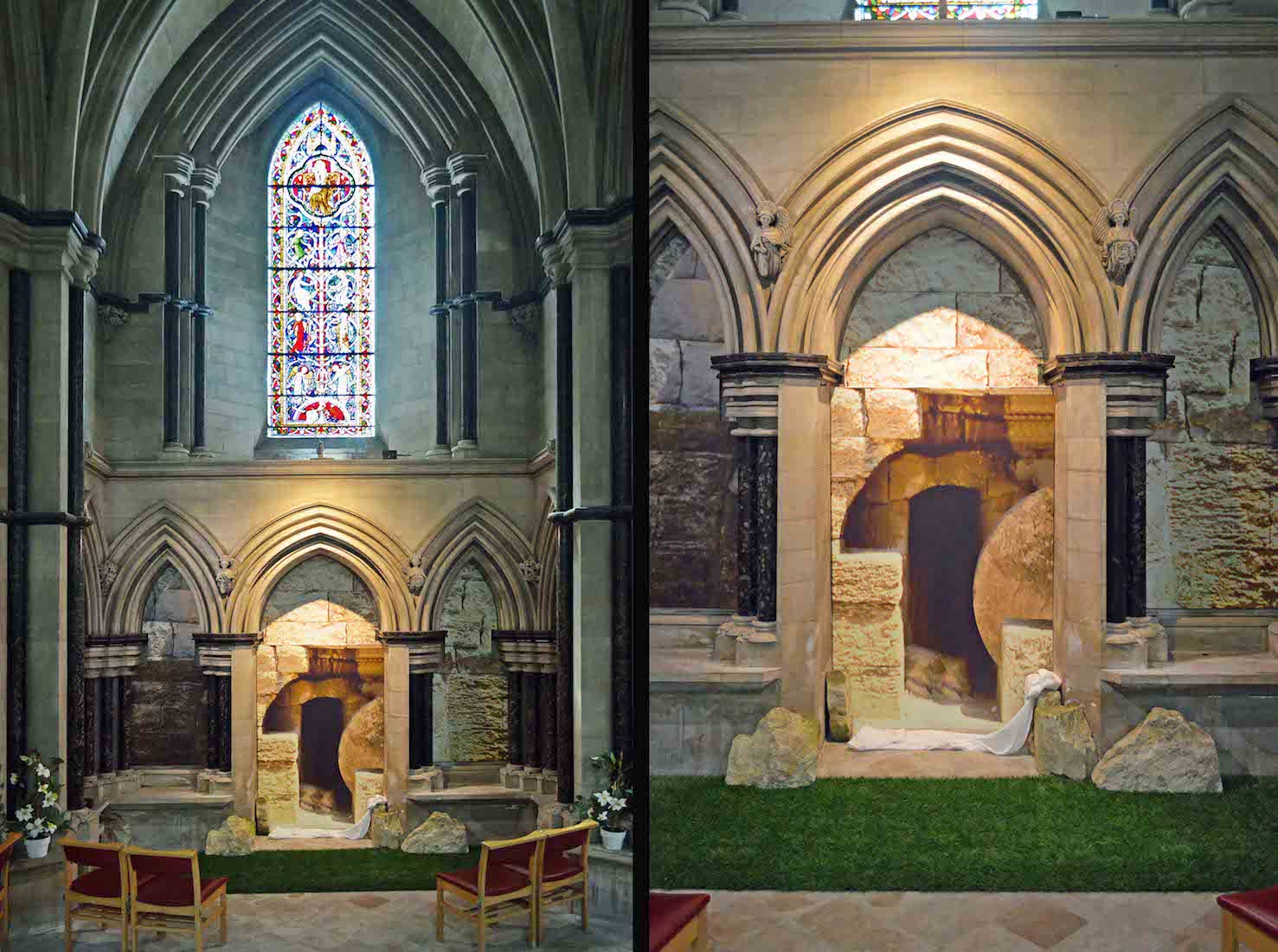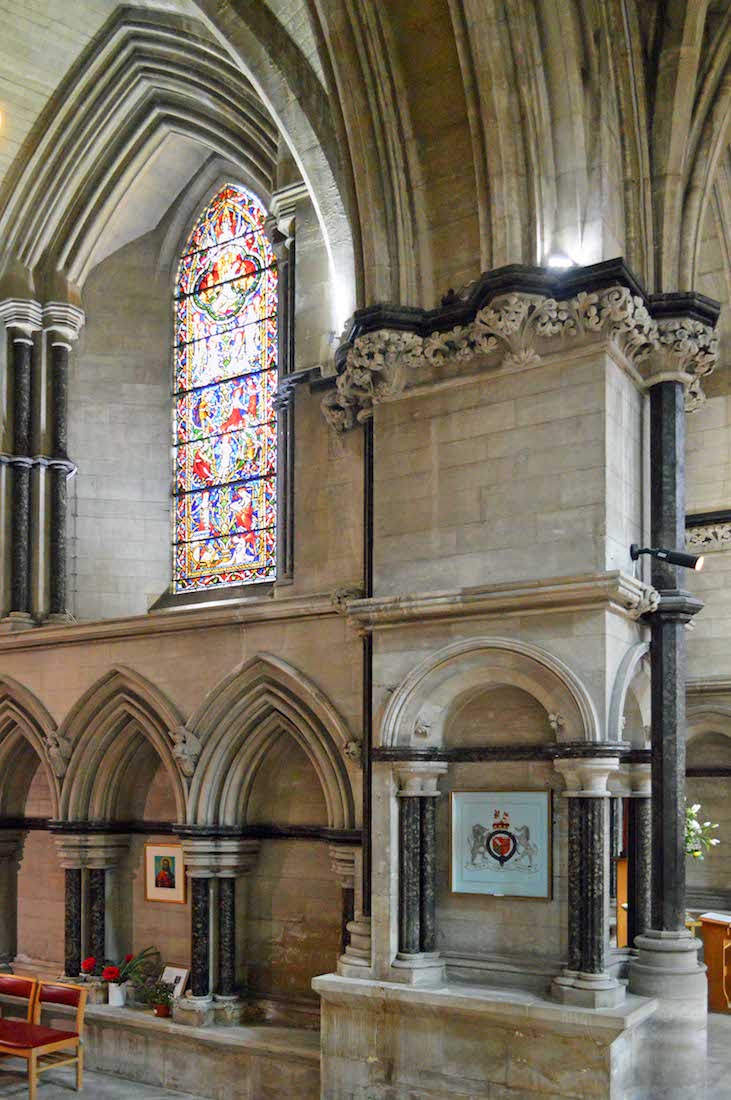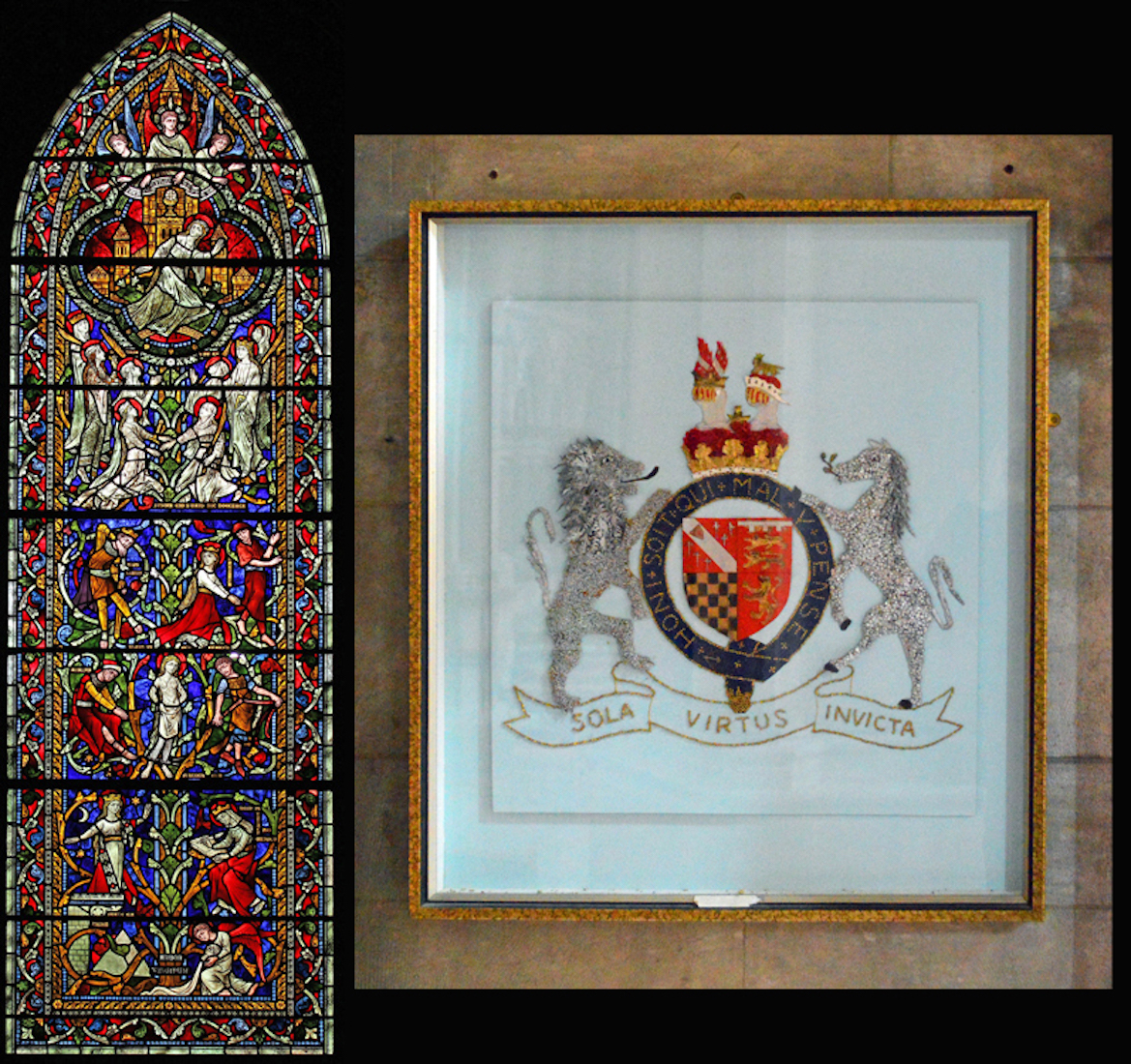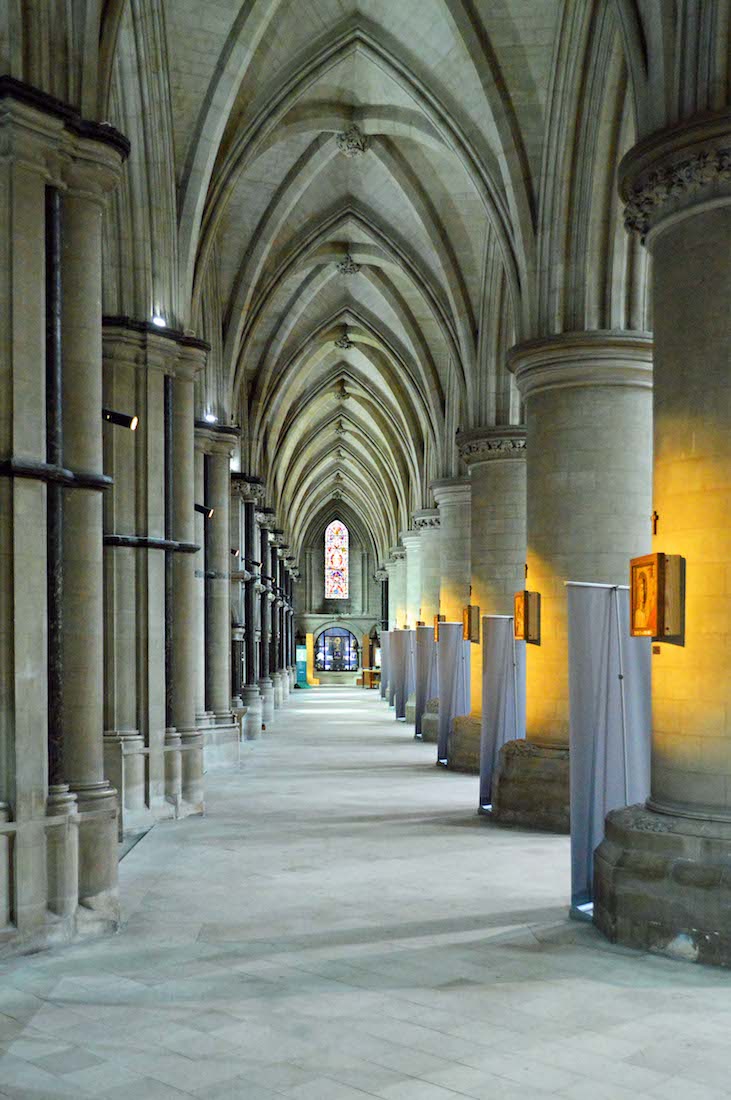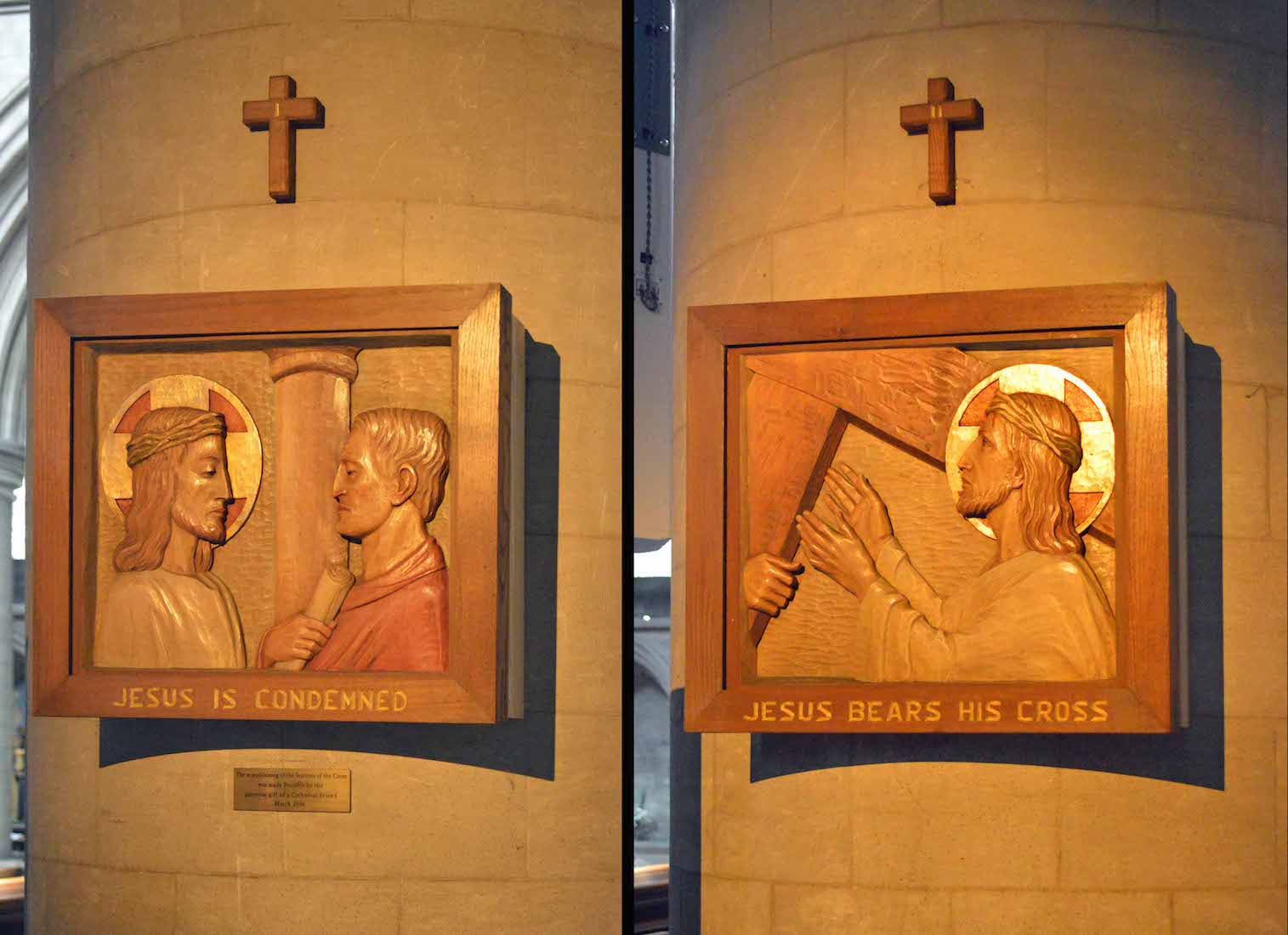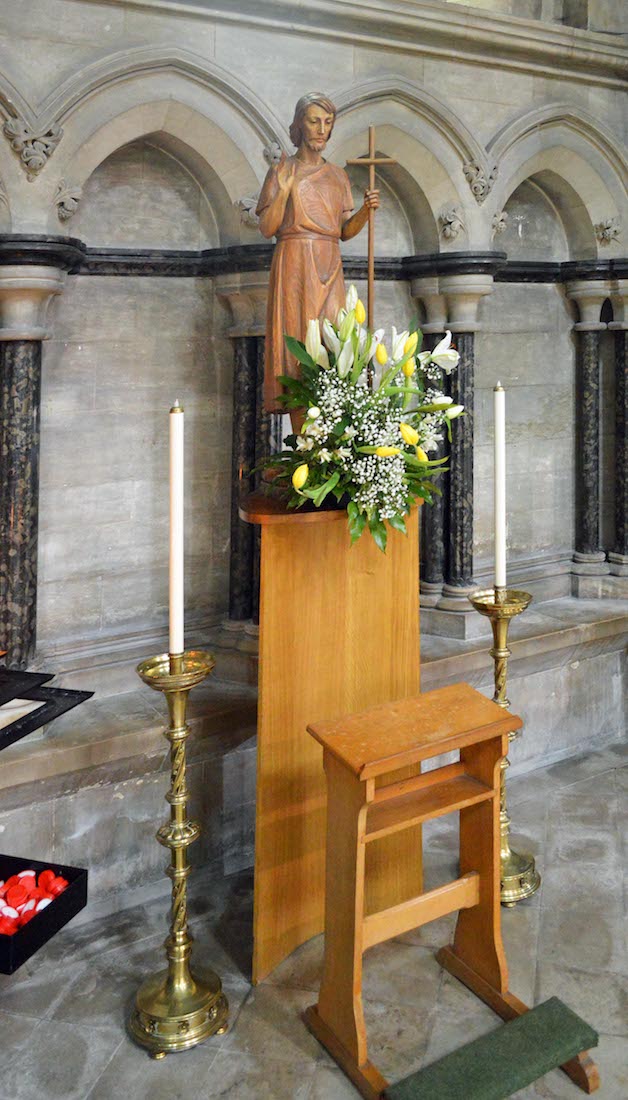61. MEMORIAL CHAPEL WINDOW AND BOOK STAND
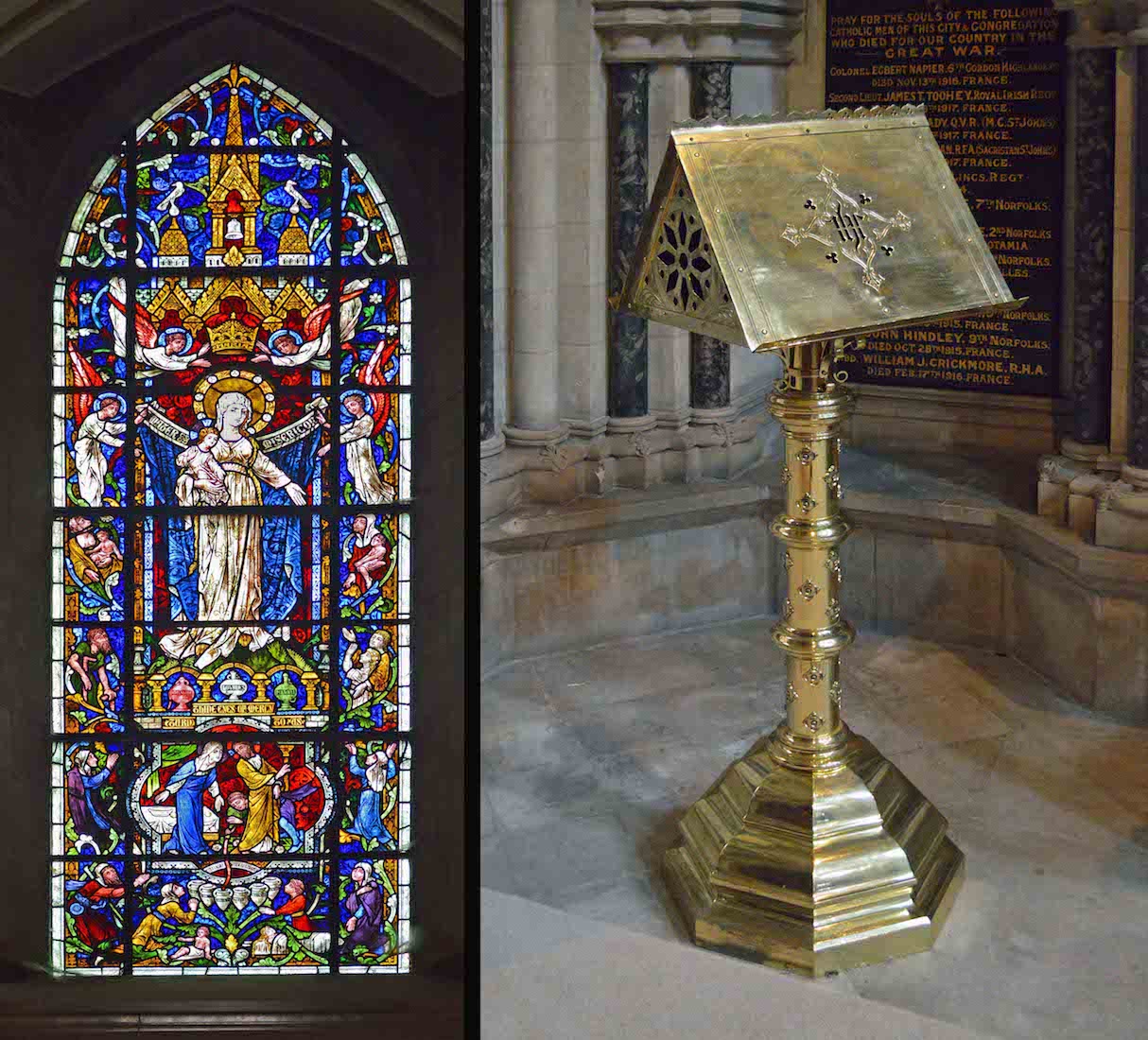
Unsurprisingly the main image in this ‘Window of Our Lady of Pity’ is of the Virgin Mother holding the infant Jesus. On either side are suppliants praying to her. Underneath we see a scene from the New Testament story of the Marriage at Cana, when at the behest of his mother Jesus turned water into wine. To one side of the chapel stands a book stand on which a Book of Remembrance can be placed. PLAN
62. MEMORIAL WALL
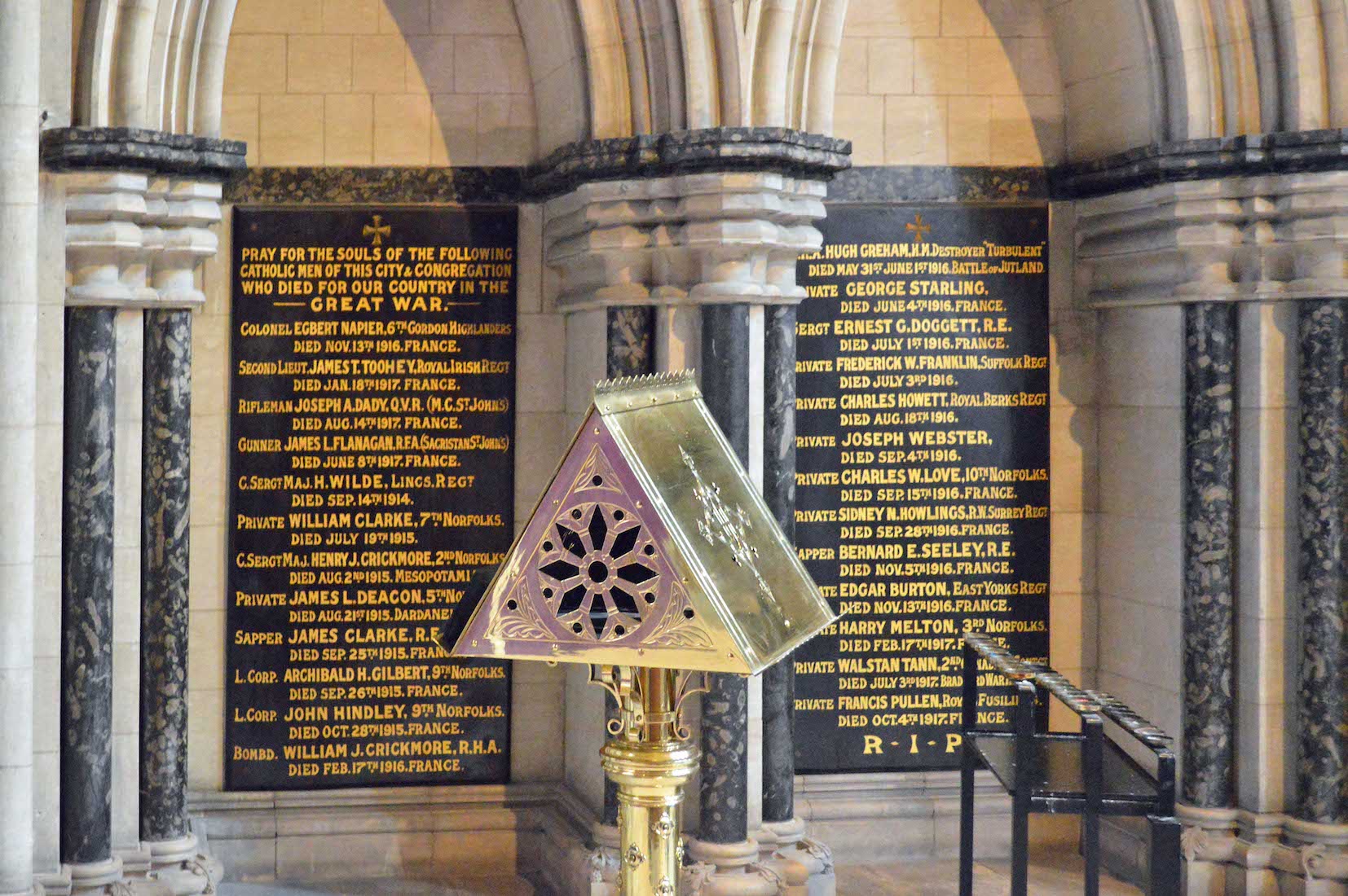
Behind the book stand is a memorial wall, with panels containing the names of members of the Norwich Catholic Cathedral who gave their lives in WWI. The left panel is headed: Pray for the souls of the following Catholic men of this city and congregation who died for our country in the GREAT WAR.
63. SOUTH TRANSEPT
Leaving the Memorial Chapel we return to the crossing and so to the South transept. The main feature here is the large South window, below which are three funeral hatchments, and the doors to three confessionals. The three blue banners celebrate the Jubilee Year of Mercy (8th December 2015 — 20th November 2016). The initial date is the 50th anniversary of the closing of the Second Vatican Council. The Jubilee Year’s theme is: “Be merciful, just as your Father is merciful.”
64. SOUTH TRANSEPT WINDOW
This window portrays Pentecost, the time in the early church when the Holy Spirit descended with a rushing mighty wind and tongues of fire. In the window, the Apostles are each identified by name. We see St Peter at the centre. Then from the left: St Matthias and St James the Less; St Andrew and St Matthew; sons of Zebedee (below St Peter); St Philip and St Thomas; St Bartholomew, St Simon and St Jude.
65. SOUTH TRANSEPT HATCHMENTS
A hatchment is a distinctive rendering of a dead person's arms, represented on a black diamond shaped frame. These three funeral hatchments come from a set of five, and are hanging here in a gallery known as the Duke’s Gallery, although the reason for this is unknown. The hatchments relate to the Jerningham family which included Earls of Stafford, for many years resident in Costessey Hall just outside Norwich.
66. SOUTH TRANSEPT WEST
On the West side of the South transept are two Gothic arches. We can see through the right arch into the St Joseph’s Chapel, which we shall investigate shortly. The arch on the left opens into a short hallway which in turn leads through to the sacristy. This small area is of interest because ot two windows and two further hatchments.
67. SOUTH TRANSEPT WEST WINDOWS
These windows are of a mainly grisaille design with additional colourful borders. Interest is given by the inclusion of small medallions containing images of biblical characters. The medallions have names beneath them, but I can only distinguish King David.
68. HATCHMENTS
Here are displayed the final two Jerningham funeral hatchments. We notice that the pair share common features. This happened when family crests were combined at time of marriage.
69. NAVE LOOKING WEST
We leave the South transept and return to the nave, with a fine view of the West window. The St Joseph’s Chapel is to our left, on the South side. It is down several steps, and has been known in the past as the Sunken Chapel.
70. ST JOSEPH’S CHAPEL
This view of St Joseph’s Chapel looks East. In the distance, past the altar and screen, we see the light of the South transept, and beyond that the organ. On the right, just this side of the steps is a statue of Joseph the carpenter. The vase of lilies reminds us of the old legend of Joseph carrying a budding staff – a sign that the Messiah would be born into his family. The chapel also has four stained glass windows – three to the South and one to the West – in memory of the late Flora, Duchess of Norfolk.
71. ST JOSEPH CHAPEL SOUTH WINDOWS
Each window represents one of the Duchess’s Christian names – Flora, Pauline, Esther and Barbara. • Left light, top: the enthroned figure of St Paulinus of York (died c644). Below are scenes from his life. •• Centre light: A budding tree of female saints with floral related names: Flora, Dorothea, Rose of Lima, Veronica and two Margarets. Top: the enthroned Virgin Mary, the Queen of Flowers. Base: the kneeling Duchess. ••• Right light, top: the enthroned figure of St Esther. Below are scenes from her life including her marriage to Ahasuerus, the King of Persia.
72. ST JOSEPH CHAPEL TOMB
Under the middle South window is a representation of the open tomb of Jesus. After the crucifixion, the body of Jesus was placed in a tomb, and guarded by the Romans. On the third day he rose again, and appeared to his disciples and to many others.
73. CHAPEL ANGELS
This Cathedral has many sculpted details which are easily missed. Here a pair of angels look down from their high position.
74. ST JOSEPH’S CHAPEL, WEST WALL
The West wall of the chapel contains the fourth of the memorial windows, and also an interesting Royal coat of arms.
75. WINDOW AND COAT OF ARMS
In this fourth window, remembering the name ‘Barbara’, at the top of a ‘tree of virgins’ we see St. Barbara, a beautiful maiden whose father imprisoned her in a tower for her disobedience. He later killed her for her conversion to Christianity, after which he was immediately struck dead by lightning. Below we see images of eight virgin saints, including Agatha, Cecilia, Agnes and Catherine. Under these are scenes from St Barbara’s life. The coat of arms belongs to the Duke of Norfolk and dates from 1397. [Window photo credit: Mike Dixon]
76. SOUTH AISLE
We leave the St Joseph’s Chapel and enter the South aisle of the nave. In the distance we see the West stained glass window above another treasury cabinet. And on the columns at right are a set of Stations of the Cross.
77. STATIONS OF THE CROSS
These wooden Stations of the Cross are the work of Ferdinand Stuflesser, who also carved the statue of St Joseph. Here we see ‘I Jesus is condemned’ and ‘II Jesus bears his Cross’. The 14 Stations of the Cross illustrate the journey of Jesus to the Cross, and are used as an aid to devotion, particularly at Easter time.
78. SOUTH AISLE SHRINE AND WINDOW
The South aisle windows are almost all of the grey grisaille type which we have already noted. This first aisle window next to the chapel is an exception. Below the window is a shrine of Mary and the young Child Jesus.
79. SHRINE AND WINDOW
As well as being a window of grisaille type, this window also contains a heraldic shield, containing on the left of the shield, the arms of the Howard family, who financed the Cathedral. Below is an attractive statue of the Virgin Mary holding the Child Jesus. Unusually, Mary is not clothed in blue.
80. SACRED HEART
Further along the South aisle is this shrine with a carved statue of the risen Christ. As we have seen once before, inspecting the statue closely reveals the image of the Sacred Heart.


